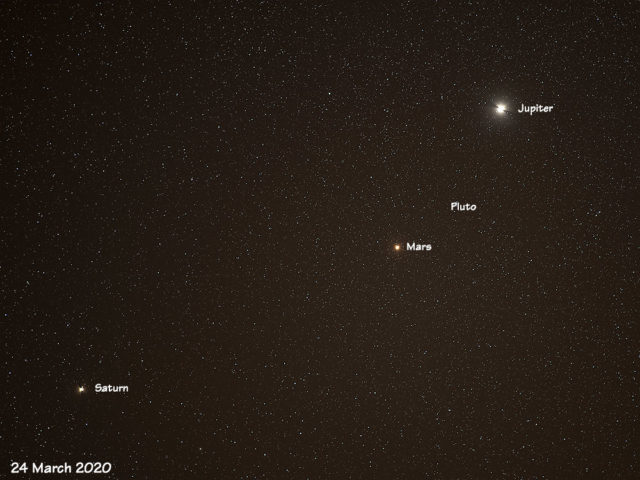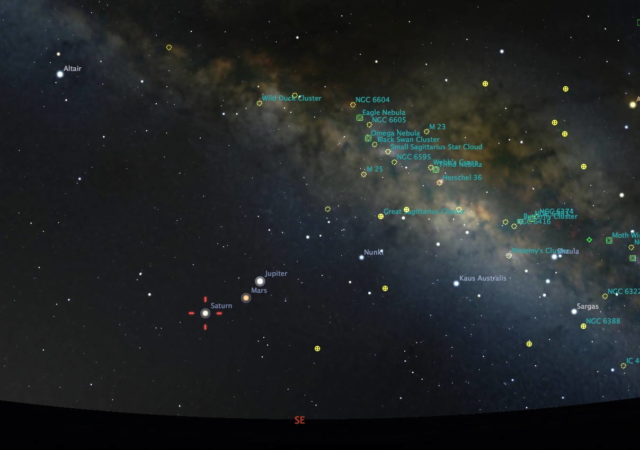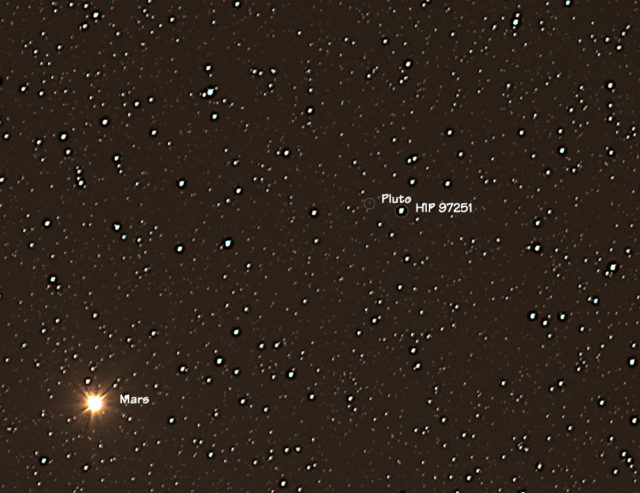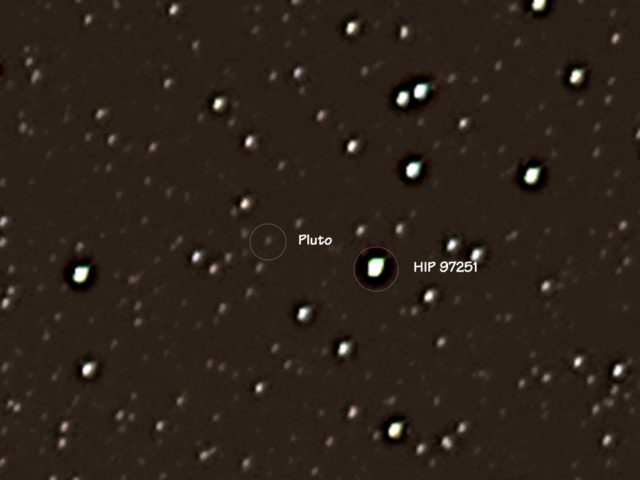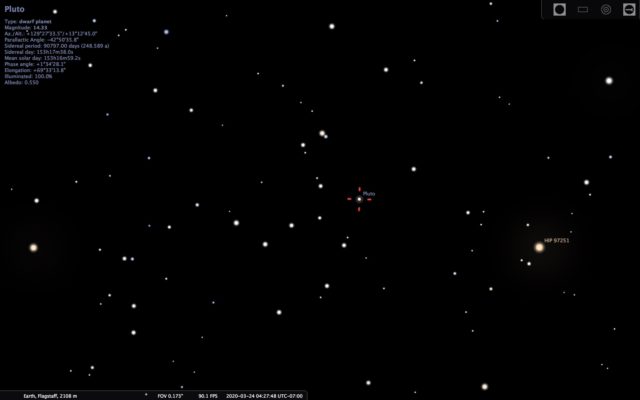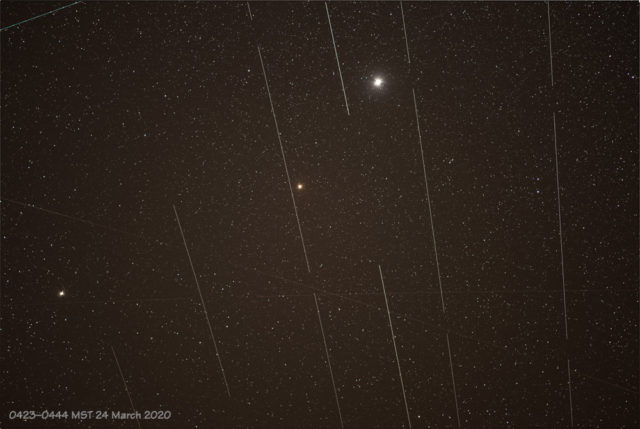I have posted several images here of the launch of SpaceX/Falcon 9 rockets from Vandenberg Space Force Base in California. These are easy to see during morning and evening twilight hours. They are less easy to see at night and quite difficult (but not impossible) to see during the day.
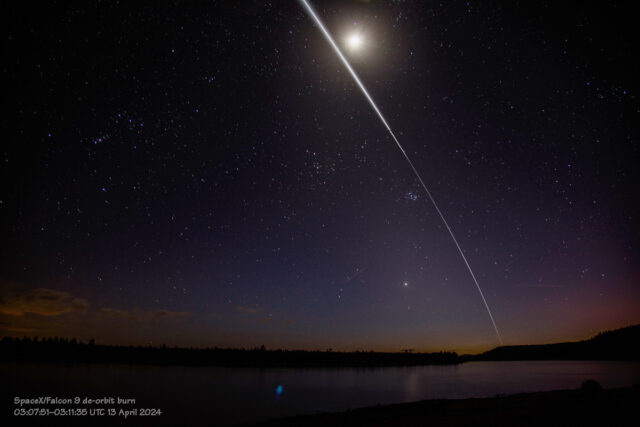
Until recently, I had never seen nor photographed a de-orbit burn on the second stage in preparation for atmospheric reentry. A few photographs have shown up from time to time—the most recent from a launch just a few weeks ago. It turns out that yesterday’s launch (12 April) was very similar: launch from Florida in the early evening, deploy Starlink satellites while over the Pacific Ocean, and then initiate a de-orbit burn as it crosses the west coast and moves across the southwest.
With this information I made a guess at what time the Falcon 9 second stage would move over Arizona and start the burn. I was only off by a few minutes so it was a good guess.
I shot with a wide-angle lens to ensure that my field of view was wide enough to capture the event (it was, until it moved overhead). We could see a small point of light that was both the cluster of 23 Starlink satellites and the second stage booster. Suddenly, it brightened significantly signaling the start of the burn. It was very bright as it moved overhead. At this point, I was not able to photograph it anymore. And that’s too bad because that’s when it got really interesting. For about 20–30 seconds it was like a puff of glowing gas moving across the sky. Really amazing! It ended quickly as the booster moved into Earth’s shadow and the light show was over.
I will probably do things differently if I get another chance. Maybe shoot video? Telephoto lens? Shorter exposures? All or none of the above?
